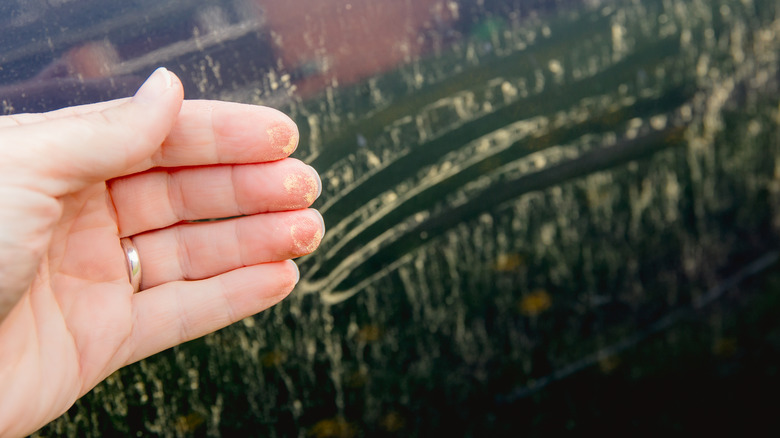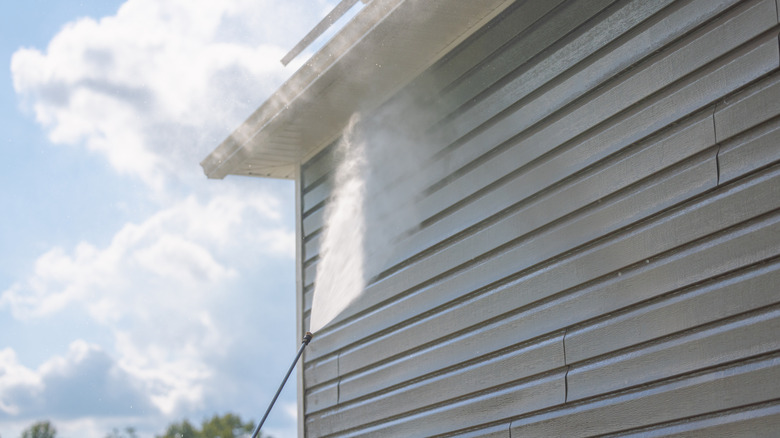Here's How To Get Rid Of The Spring Pollen Coating Your Home
Springtime weather brings plenty of sunshine and rain — the perfect combination to make flowers and trees bloom. With all of this new growth, you're sure to see pollen, a fine powder produced by plants, on your surfaces. It's incredibly lightweight (but quite sticky), allowing it to be easily carried by the wind to land on your car, driveway, and even the exterior of your house. While there are tips for keeping pollen out of your home, the best way to get rid of the spring pollen coating the outside of your home is to use a pressure washer to blast it away. This should remove most of the pollen from your home, without damaging your siding.
Remember that regular cleaning during peak pollen season can help prevent heavy buildup, keeping your home looking its best. Plus, it can also help reduce the amount of pollen that gets tracked inside your house, potentially alleviating allergy symptoms for those who may be sensitive. You can also help alleviate the amount of pollen you might need to remove from your house by considering the flowers that are the best and worst for allergies – and ensuring you don't plant any chrysanthemums and daisies in your yard.
How to clean the outside of your home
Even if you're a pressure washing pro, you want to make sure to steer clear of some mistakes everyone makes when pressure washing. First, be sure to use the proper nozzle when cleaning — you'll want a nozzle that gives a wider spray to avoid damaging your home's siding. Start at the top of your home, working your way down in overlapping strokes to ensure even cleaning and prevent streaks. You'll also want to avoid spraying your windows — even if they are covered in pollen — since they will be better served by a light spray from your garden hose.
If you still notice patches of pollen after pressure-washing your exterior, mix warm water with dish soap and use a gentle scrub brush to spot-clean those stubborn areas, working from top to bottom to prevent soapy water from running down onto already cleaned sections. Make sure you rinse thoroughly with your hose afterward. This step is crucial to remove any soap residue, which can attract dirt and pollen over time, potentially leading to new or even worse buildup.
No matter the method, it's best to clean your home's exterior of pollen on a clear, dry day to allow the surfaces to dry quickly and prevent streaks and further buildup. Additionally, since these methods involve making your house wet, you'll want to ensure your house has time to dry before it rains since excess moisture can potentially cause mold or mildew.

